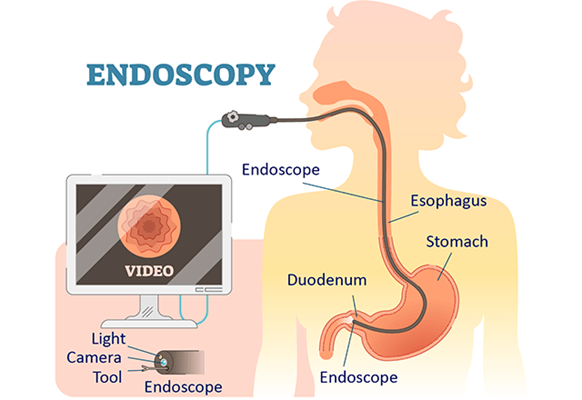Endoscopy
Endoscopy is a minimally invasive medical procedure used to examine the interior of organs and cavities within the body. It involves the use of a thin, flexible tube called an endoscope, which has a light and a camera at its tip. This device allows doctors to view real-time images of areas such as the esophagus, stomach, intestines, and more, without making large surgical cuts. Endoscopy helps in diagnosing various conditions like ulcers, inflammation, tumors, or bleeding. It can also be used for minor treatments, such as removing polyps or taking tissue samples for biopsy. The procedure is generally quick and safe, often requiring only local anesthesia or mild sedation. Most patients experience little to no discomfort and can return home the same day. Recovery is usually fast, with minimal side effects like a sore throat or mild bloating depending on the type of endoscopy performed. It plays a crucial role in early detection of diseases, especially in the digestive system, enabling timely treatment. Endoscopy has become a common and essential tool in modern healthcare, helping doctors make accurate diagnoses while ensuring patient comfort and safety. Its ability to detect issues early makes it vital for preventive health management.

What is Endoscopy?
Endoscopy is a non-surgical medical procedure that allows doctors to examine the inside of a patient’s body using an instrument called an endoscope. The endoscope is a flexible tube with a light and a camera attached to it. This device transmits images of the internal organs onto a screen, helping doctors to identify, diagnose, and sometimes treat medical conditions.
Why is Endoscopy Performed?
Endoscopy is performed for both diagnostic and therapeutic reasons. It is commonly used to:
- 🔹 Investigate symptoms like stomach pain, ulcers, difficulty swallowing, or gastrointestinal bleeding
- 🔹 Diagnose diseases such as cancer, ulcers, inflammation, or infections
- 🔹 Take biopsies (tissue samples) for lab analysis
- 🔹 Remove foreign objects or growths like polyps
- 🔹 Perform minor surgical procedures
What to Expect During the Procedure
1. Patients are usually advised to fast for several hours before the procedure.
2. Local anesthesia or sedation is commonly used for comfort.
3. The procedure typically lasts 15 to 60 minutes.
4. Some types of endoscopy require a hospital setting, while others can be done on an outpatient basis.